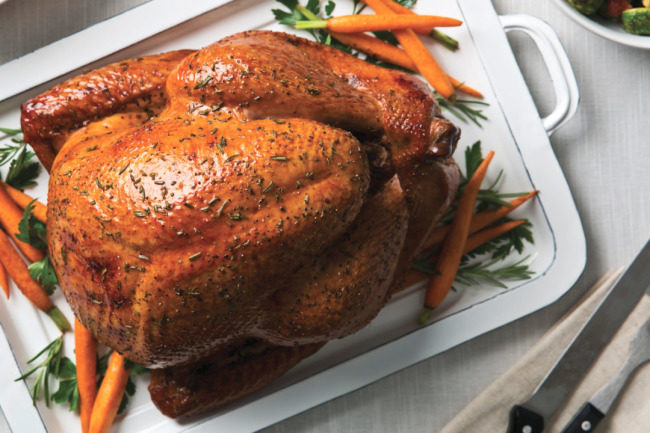CHICAGO – News of shortages and supply chain disruptions has injected a sense of urgency into the holiday shopping season. IRI, a Chicago-based market research firm, has been tracking consumer purchasing behaviors ahead of Thanksgiving, and key trends have emerged. By closely monitoring these trends, IRI said, manufacturers and retailers can more easily develop the right products, prices and promotions to meet consumer demand.
First, more consumers than ever are shopping early. “Following widespread media reporting on supply chain challenges, 34% of consumers reported they are stocking up on certain items because they are concerned that the products might not be available the next time they shop,” IRI said.
Sales uplift of Thanksgiving items in the three-week period ending Oct. 31 was 63%, compared to a historical uplift of 45% in years prior, according to IRI. This trend accelerated during the week ending Oct. 31, 2021, driven largely by sales of wet broth/stock, turkeys, pie pastry filling and stuffing. Sales were up 86% compared to a historical average of 54%.
“More than ever before, consumers are planning ahead for Thanksgiving by shopping early for key items, driving a 4% sales lift of the entire edible category for the week ending Oct. 31, 2021,” said Krishnakumar S. Davey, PhD, president of client engagement for IRI. “The distinct behavior patterns of each shopper demographic create important insights for manufacturers and retailers as they optimize their advertising and promotion strategies in the final weeks leading up to Thanksgiving.”
IRI data shows that shopping habits vary widely among consumers of different demographics, primarily across age groups and household income levels. Lower-income shoppers are waiting to buy meat and side dish items until closer to Thanksgiving, while middle- and high-income households are more likely to shop those categories ahead of the holiday week.
However, households at all income levels buy pies, baking products and beverages in the weeks leading up to the holiday.
“Manufacturers and retailers without supply constraints who are targeting price-sensitive consumers should focus promotional efforts on pies, baking products and beverages as early as three weeks before Thanksgiving but wait to discount meat and sides until the week before or the week of the holiday,” IRI said.
Older consumers are typically more likely to shop for Thanksgiving supplies early, while younger households are more likely to wait to shop until the week of Thanksgiving, IRI said. Younger households are also more open to new traditions and brand-switching.
“Manufacturers and retailers should launch holiday digital campaigns when holiday shopping is most relevant to their target demographic and focus promotions targeting younger households on products that attract shoppers to a new category,” IRI advised.
Finally, meat and pies are categories most at risk of out-of-stock status, according to IRI. The research firm found that, despite the continued acceleration of demand for certain Thanksgiving items before the holiday week, in-stock levels for the week ending Oct. 31 were largely consistent with levels reported the week prior, with the exception of meat, which was down 3 percentage points.
“Meat and pies continued to be the only categories that show lower in-stock percentages compared to the year-ago period, down 13 and 3 percentage points, respectively,” IRI said.


